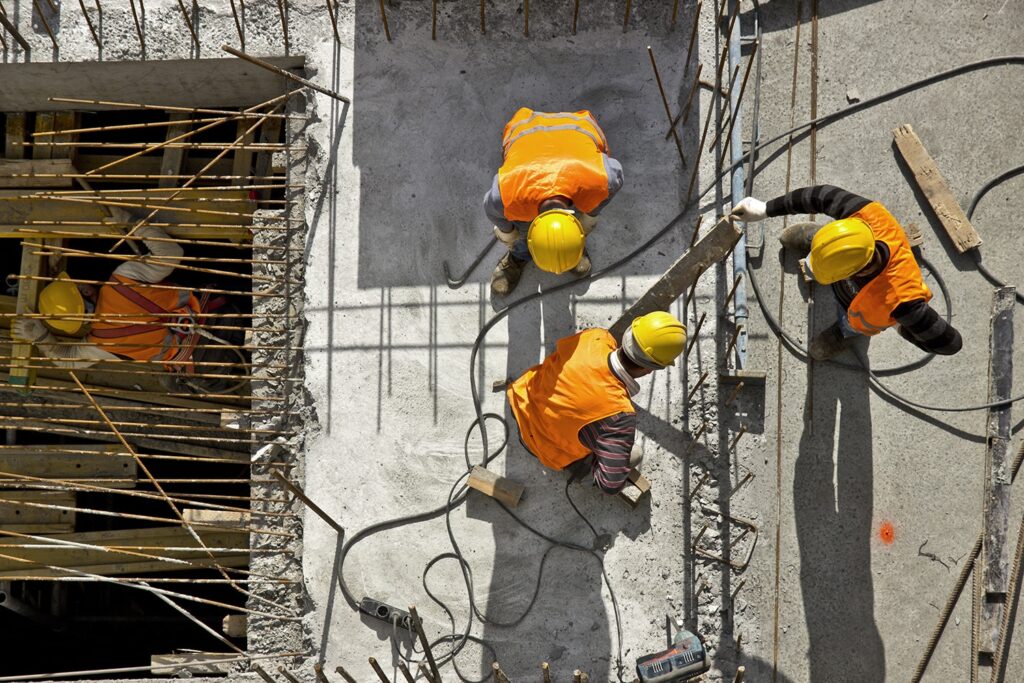This is the third blog in our series about the ups and downs of the construction sector in 2020. In this blog, we will discuss the deals throughout 2020 in the Construction Sector, the current skills shortage and provide some recommendations to help you adapt.
The Construction Sector Deal – 2020
The Construction Sector Deal, implemented in July 2018, aimed to increase productivity in the construction industry and create a highly-skilled workforce.
The deal focuses on five main strategies: Innovative ideas, increasing worker skill level, improving infrastructure, creating business environments, and developing local economic opportunities in communities across the UK. This would result in better-performing buildings, lower energy consumption, more jobs, and more effective and innovative manufacturing.
Significant progress after one year
After one year, the government determined that the deal had made significant progress. £170 million, plus £250 million from the industry itself, has been invested in the Transforming Construction Programme. The programme aimed to transform the manufacturing processes in supply chains to increase productivity. The majority of this funding has been allocated to businesses, researchers, and innovative projects. Many of these projects are still in progress, but notable achievements include the SEISMIC Consortium’s standardisation of offsite manufacture of primary schools. This standardisation improves stability and efficiency and has resulted in significant reductions in materials and carbon emissions. Costs for new schools have reduced by 25%.
This standardisation improves stability and efficiency and has resulted in significant reductions in materials and carbon emissions.
The effect of increasing the skill level of the workforce
To increase the skill level of the workforce, 76 new standards in construction-related roles have been approved, which exceeds the target outlined in the deal. In January 2020 the Go Construct website was launched that provides information about Construction careers in a single platform.
However, despite investment in many initiatives to increase Apprenticeship Starts, the 2018/2019 start total was 22,530 – below the 25,000 targets for December 2020. Official figures have not yet been released as to whether this target was met in the 2019/2020 academic year.
In September 2020, the first T-Level construction courses were launched, offering a 2-year course equivalent to 3 A-Levels and including at least 315 hours of industry placement. This forms a part of the construction sector deal to increase the training level of the workforce. The total enrollment target was 118, and figures show 143 enrolled students, which is 21% above target. However, of 16 schools and colleges that provided data, only seven schools and colleges across the UK offered T-Level routes in construction. Of these, three were under their enrollment targets. Hence, whilst T-Level courses struggled to meet enrollment targets in other disciplines, in construction they were well received, but still operate on a small scale. A fully comprehensive review of T-Levels is likely to be unavailable for several more months.
The roadmap for the construction sector
In February 2020 the Green Construction board released their draft roadmap for the construction sector. This outlined how waste can be limited at every stage of the construction process and how this can be incorporated into standardised systems.
In June 2020 the government released a National Infrastructure and Construction Pipeline analysis, aiming to provide visibility of planned procurements in construction in the upcoming year. The publication states that to help the industry recover from the impact of Covid-19, between £29 and £37 billion will be invested in the sector in the upcoming year. This includes construction work, repair and maintenance, architectural and construction inspection services and consultancy services. The Pipeline will increase transparency, allowing the industry to become more coherent and interconnected to increase efficiency.
The Pipeline will increase transparency, allowing the industry to become more coherent and interconnected to increase efficiency.
Skill Shortage and Recommendations
Due to various external factors, including the COVID-19 pandemic as well as a general trend within the sector, the construction industry is struggling with a shortage of workers. This is apparent when looking at the government’s goal to develop 300,000 additional housing units by mid-2020. To achieve this goal, the construction industry would need an additional 200,000 skilled workers.
In terms of skill, the construction sector has a relatively good basic-skill development infrastructure, but the development of higher-level skills is less focused on. This highlights an additional shortage within the construction industry, especially as construction projects become more complicated in order to adhere to new environmental and economic expectations.
To improve the state of the skill shortage, the construction industry should implement new factors to stimulate the workforce and produce an inflow of new workers.
Increase of Education
• There is a neglected stigma that the construction industry would be difficult and unexciting to work in. This stigma reduces the chances of young workers joining the construction sector.
• Forming connections with schools would increase the flow of potential new workers.
• Additionally, higher skill education is necessary to develop that portion of the sector; however, there is already a sound system in place, but not many applicants for the positions.
Focus on training
• Training is an essential part of construction and should be taken into consideration when introducing new workers into the industry. Skilled workers are what the construction industry needs to achieve its goals for the coming years; a focus on producing more skilled workers and putting them out on the job market would contribute to achieving those goals
Be aware of already skilled workers
• Workers from outside of the construction sector can provide very valuable resources and insight, even if their training is not explicitly for construction. Recognise that hiring skills from outside the sector increase the size of the hiring pool.
Treat gender imbalances
• As little as 11% of the construction industry consists of female workers. Informing and explaining the industry in schools, which links to the education point, can further broaden the hiring pool.
Adapt to new methods
• As technology improves, both the market and the method of construction will evolve. Keeping up with the speeding train that is innovation would help maintain interest in the construction sector and incentivise more new workers and workers from other industries to consider construction as an advantageous opportunity.
Skilled workers are what the construction industry needs to achieve its goals for the coming years
More to come
In upcoming blogs, we will identify and discuss possible adaptations or solutions that help guard against any negative effects that may result from the main influencers which affect the sector.
Xeinadin supports businesses in the construction sector. Visit our sector page for more info and an overview of the services we offer, or contact us directly if you need advice from one of our (local) business advisors.





